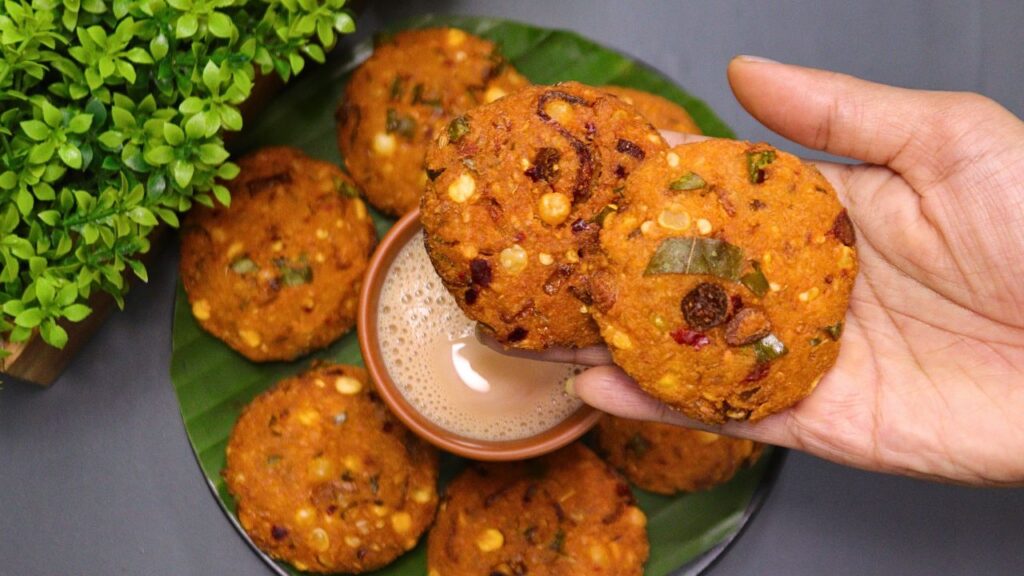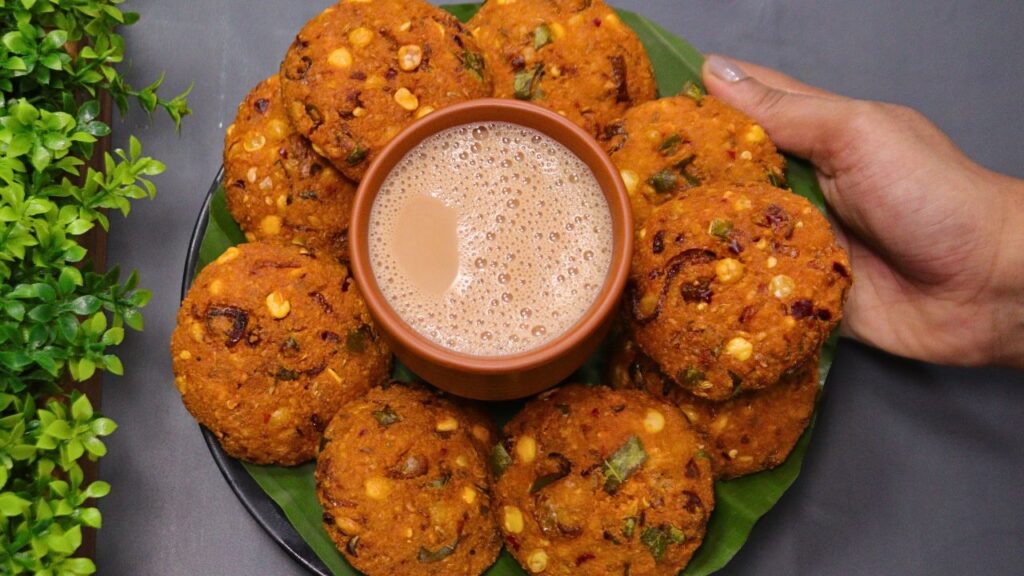



Dal Vada is a beloved deep-fried snack from South India, known for its crispy exterior and flavorful, hearty interior. Made from chana dal (split chickpeas), aromatic spices, and herbs, these fritters perfectly balance texture and taste. Whether enjoyed as a tea-time snack, street food, or part of a festive spread, dal vada is special in Indian cuisine.
In this content, we will explore the history, cultural significance, key ingredients, nutritional benefits, and some variations of dal vada, without diving into the detailed preparation steps.

Dal vada, also known as paruppu vadai in Tamil or chana dal vada in other regions, has its roots in the southern states of India, particularly in Tamil Nadu and Andhra Pradesh. It is traditionally served during festivals, special occasions, and even as an offering to deities in temples.
In South Indian households, dal vada is synonymous with celebrations. Whether it’s Diwali, Pongal, or Navratri, the crispy fritters are an integral part of the festive menu. Besides being a snack, dal vada is also served with meals as a crispy side dish, adding an element of crunch to the meal.
In terms of street food, dal vada is immensely popular across India. Vendors often fry them fresh and serve them piping hot, often accompanied by chutneys like coconut, mint, or tamarind. The sound of sizzling oil and the aroma of frying vadas is a common sensory experience in Indian streets, making dal vada a nostalgic comfort food for many.
While this recipe may appear simple at first glance, its flavors and textures are achieved through a combination of high-quality ingredients and the right balance of spices. Let’s take a closer look at the key ingredients and their roles in creating the perfect dal vada:
Despite being a deep-fried snack, it offers a surprising number of nutritional benefits when consumed in moderation. Here are a few key nutritional highlights of the main ingredients:
While the traditional dal vada is made with chana dal, several regional variations and adaptations exist, offering different flavors and textures. Here are a few:

Dal Vada is more than just a snack; it’s a celebration of flavor and texture. Whether served as part of a festive meal, offered to guests, or enjoyed with a hot cup of tea on a rainy day, these crispy, spicy fritters are an iconic part of South Indian cuisine. Rich in protein, full of bold spices, and easy to make, dal vada is a dish that brings people together, sharing the joy of food and tradition in every bite.
Wash and soak 1 cup of chana dal in plenty of water for 3 hours. After soaking, drain off the water completely. Set aside 2 tablespoons of the soaked dal for added texture.
Transfer the remaining soaked chana dal to a grinding jar along with 1 teaspoon of fennel seeds and 4 dry red chilies. Pulse the mixture into a coarse paste. Avoid adding any water to keep the batter thick. You want some texture for extra crispiness.
In a large bowl, add the coarse dal mixture, the reserved whole soaked chana dal, shallots, green chilli, ginger, garlic, curry leaves, hing, salt and rice flour.
For an extra flavor twist, add ½ teaspoon of garam masala or ½ teaspoon of cumin seeds for an earthy touch. You can also add finely chopped coriander leaves for freshness.
Mix everything well to form a dough-like consistency. Take a small portion of the dough and press it between your palms to form flat, round patties. The size should be around 2 to 3 inches in diameter. Slightly press the patties to ensure they cook evenly.
Heat 3 cups of oil in a deep pan over medium heat. Once the oil is hot, gently slide in the vada patties. Do not stir immediately—let them cook undisturbed for 1 minute, allowing the vada to form a crust. Once they begin to float, gently flip them.
Fry the vadas on a medium flame, flipping occasionally to cook evenly on both sides. Fry until the vadas turn golden brown and crispy—about 5-7 minutes per batch.
Once golden and crispy, remove the vadas from the oil and place them on a paper towel or kitchen towel to absorb excess oil.
Serve the crispy dal vadas hot with a side of coconut chutney, green mint chutney, or tamarind chutney. For an extra indulgence, you can sprinkle some chaat masala on top of the hot vadas for a tangy kick.